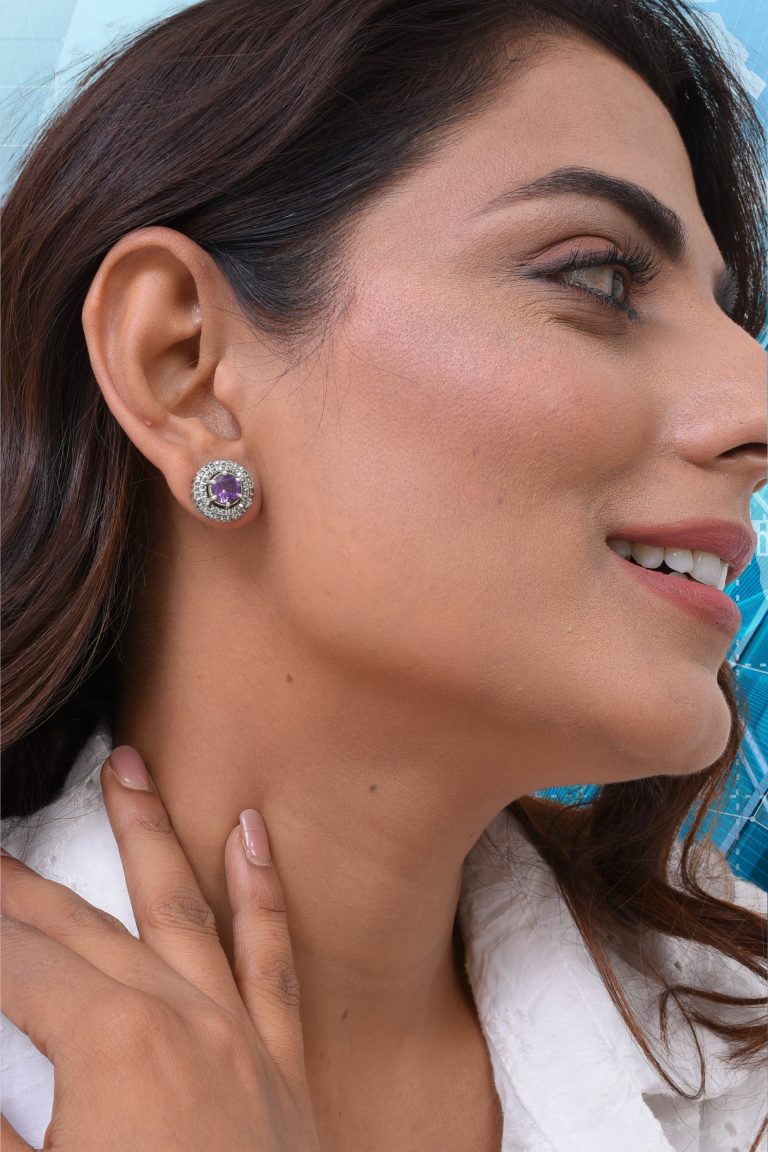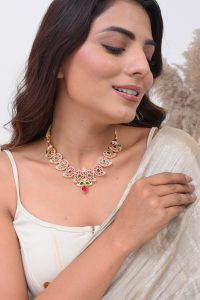I still remember the day I purchased an imitation necklace online. It looked dazzling in the photos, the “cubic zirconia” sparkled, and the gold finish seemed luxurious. But after wearing it once to a family gathering, those tiny stones loosened, the finish tarnished, and I spent more time adjusting it than admiring it.
That taught me a lesson: inexpensive doesn’t always mean bad, but high-quality imitation jewellery is rare. When done well, it can look just as alluring as real jewellery — if you know what to look for.
Here are 7 bold, proven ways to tell whether imitation jewellery is high quality. I also include recent trends and keywords so you can shop smarter (“fashion jewellery”, “oxidised jewellery”, “CZ jewellery”, “bridal imitation jewellery”, etc.).
1. Check the Materials & Finishes
-
A high-quality piece uses durable base metals (like silver 925, brass, or alloy of good grade), properly plated with real precious metals (gold plating, rhodium, silver plating).
-
The finish (gold tone, rose gold, rhodium, oxidised) should be even. No patchy spots or dullness.
-
If it claims “CZ jewellery”, “cubic zirconia stones”, or “AAA grade stones”, look closely: high clarity, no glue residue, well-faceted stones that reflect light well.
-
Water resistance / tarnish resistance: A quality imitation piece will have plating that resists peeling or discoloration even after coming in contact with sweat, perfume, water.
2. Examine Craftsmanship & Details
-
Look at edges and joints: are they smooth or rough? Are there visible seams or glue?
-
Stone settings: prong settings should be tight, stones should sit snug and consistent; fake gems shouldn’t wobble.
-
Clasp, chain, hooks: small but important. A weak clasp or very thin chain might break quickly.
-
Weight: surprisingly, heavier sometimes is better—solid base metal and good plating make it feel more premium (though not too heavy to be uncomfortable).
3. Review Product Specifications Clearly Given
-
Dimensions, weight, type of metal/plating, type of stones: look for this in the product description. If a seller says “gold colour” vs “14K gold plated” — big difference.
-
If it’s polished, oxidised, matte finish, enamel, kundan, polki, temple style — these terms should appear. Using keywords like “oxidised jewellery”, “antique finish”, “traditional kundan set” is common in high-quality pieces.
4. Check for Consistency & Quality Control
-
When buying from a brand/marketplace, see if all pieces are consistent: same color of metal, matching stones, same symmetry.
-
Do they offer guarantees or returns? A brand confident about its quality often has a return policy.
-
Reviews and photos from buyers: especially ones that show the item after a few uses. “Looks like new” after a month = good sign; “tarnished”, “stones fell” = warning.
5. Understand Plating & Longevity
-
Plating thickness matters: often measured in microns. A thin plating might wear off quickly, revealing base metal.
-
Rhodium plating over silver is longer lasting; gold plating over brass or alloy less so.
-
If advertised “gold plated jewellery with lifetime guarantee” or “premium plating”, check testimonials. The phrase “everyday wear” is something to look for.
6. Trust the Brand / Seller Reputation
-
Local artisans often have better craftsmanship.
-
Online brands that show behind-the-scenes, give videos of the product, have good return/refund policies, detailed FAQs.
-
Payment security: cash on delivery or trusted payment gateways helps protect you.
7. Price vs Value — Know What You’re Paying For
-
If something is unbelievably cheap (for what it claims), there may be compromises: thinner plating, weaker base metal, less durable settings.
-
A higher price doesn’t always mean better quality, but if the price is moderate with good materials, good craftsmanship, brand trust, you’re likely getting good value.
-
Use price to filter out extremely low-quality items, but don’t assume the highest price = best. Look at all the other signs.
⭐ Bonus Tips (From Real Shoppers)
-
“If after wearing for just one night, the gold colour rubs off on your skin, that’s the biggest red flag.”
-
“I always test clasp and stone settings in store; if it creaks or feels loose, I leave it.”
-
Try smelling: bad plating sometimes smells chemical; good metal/plating tends to be neutral.
Final Thoughts
“Good imitation jewellery is not about tricking people; it’s about celebrating style without the weight of prices, but with the soul of craftsmanship.”
When you combine all the things above — strong materials, good craftsmanship, honest specs, reputable seller, reasonable pricing — you’ll find imitation jewellery that doesn’t just look good in pictures but stays beautiful in real life.
So next time you see something that catches your eye (that sparkle!), pause. Ask the questions. Check the small print. And buy something that when you wear it, you feel proud — not disappointed.
Veliorya provides 7 days return and refund, 30 Days Exchange and lifetime warranty on quality. Dont you think this is what every imitation jewellery brand should provide ?











